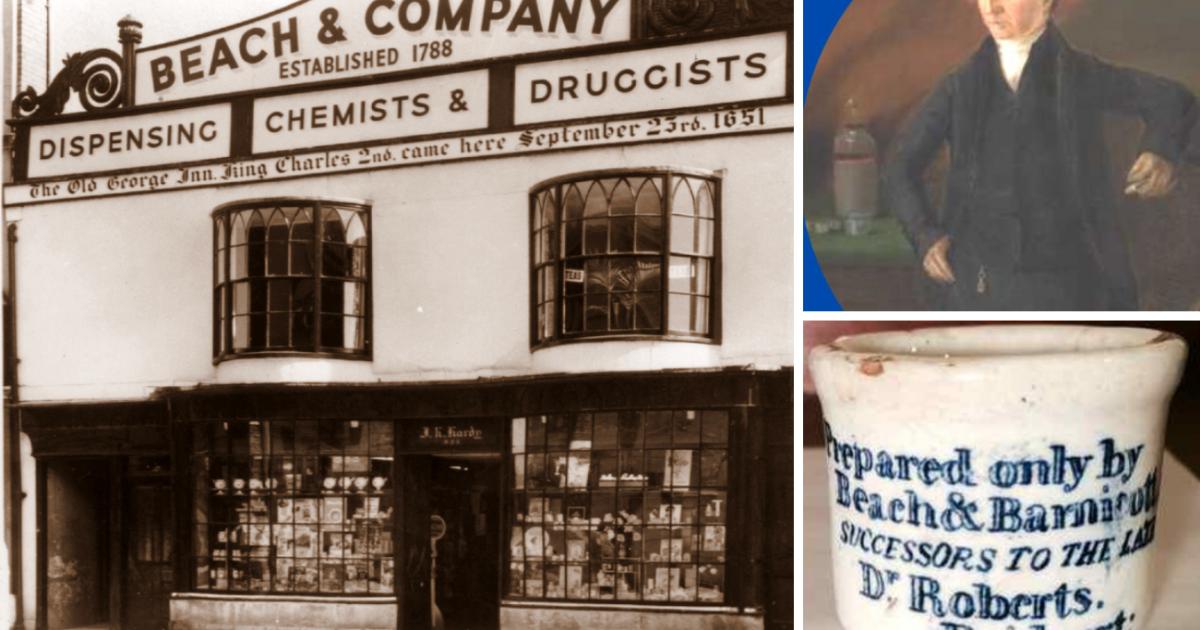The building first opened in 1788 and quickly became central to the town’s medical and commercial life.
Dr. Roberts, born in 1766 in what is now The Bridport Arms in West Bay (formerly the Ship Inn), was not just a physician but a clever marketer.
In 1798, he began selling a healing ointment that would become nationally famous.
‘The Poor Man’s Friend’ helped to put Bridport on the map, promising cures for everything from ulcerated legs, even if of twenty years standing, cuts, burns, scalds, bruises, eruptions, pimples, sore eyes, cancerous humours and eruptions that follow vaccinations.
With bold advertising and strategic distribution, Roberts ensured the ointment’s success across the country.
The ‘secret’ recipe, now held at the Bridport Museum, reveals a blend of pig fat, beeswax, small amounts of lead, bismuth and zinc oxide. Red colouring was added to make it look attractive, and rose and lavender oil to make it smell better.
In 1805, Doctor Giles Roberts opened his shop at 9 East Street, formally the Old George Inn. Here he was able to set up a laboratory and give lectures.
After Dr. Roberts’ death, the business was continued by Thomas Beach and John Barnicott – and to this day, their names remain on the front of the building which now serves as a late-night venue.
Dr Roberts is buried in the graveyard at St Mary’s Church. His grave on the northern side of the building is marked by a large obelisk. It’s not far from the home of Jim Hoskins who took the lead role in The Poor Man’s Friend.
From healing balm to local lore, the legacy of Dr. Giles Roberts and his ‘Poor Man’s Friend’ continues to echo through Bridport’s streets, shopfronts, and stories.
